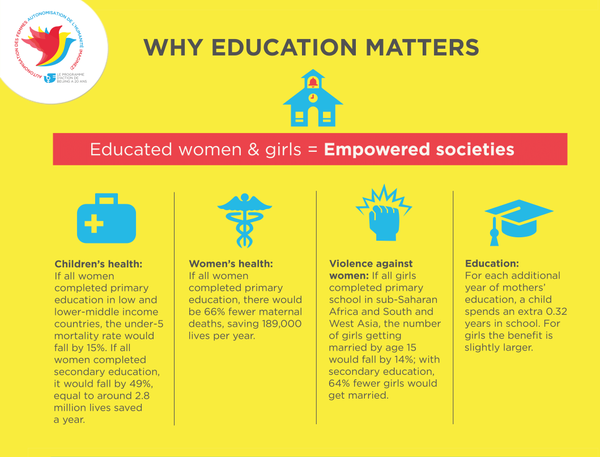Kofi Annan famously said once “Literacy is the means through which every man, woman and child can realize his or her full potential.”
As per a report published by the Hindu, new research on female literacy shows that India’s school education system is under-performing in terms of quality when compared to Pakistan, Bangladesh and Nepal. The research studies changes in female literacy over a number of schooling years. The proportion of women who completed five years of primary schooling in India and were literate was 48 per cent, much less than 92 percent in Nepal, 74 per cent in Pakistan and 54 per cent in Bangladesh.


India has been fighting the demons of literacy since Independence. Many programs and schemes have been geared towards raising the literacy rate of the country and providing easy access to education for all citizens of the country. At 74.04% literacy rate (as per 2011 census), our literacy rate is below the world average literacy rate of 84%.
The Right to Education Act (which came into being in 2009) provides for the: Right of children to free and compulsory education till completion of elementary education in a neighbourhood school. It clarifies that ‘compulsory education’ means obligation of the appropriate government to provide free elementary education and ensure compulsory admission, attendance and completion of elementary education to every child in the 6 to 14 year age group. It has been shown time and again that the quality of education provided by the government school system is not good. While it remains the largest provider of elementary education in the country, forming 80% of all recognised schools, it suffers from shortage of teachers and infrastructural gaps. Several areas lack schools altogether. There are also frequent allegations of government schools being riddled with absenteeism and mismanagement and of appointments made on political convenience.
It is no wonder then that despite literacy rate going up, the quality of education and lack of literacy mars the educational growth of children. Providing access to education is one the greatest challenges in our country, more so for girls. That is the reason for the huge gender disparity in India’s literacy rate – 82.14% for men and 65.46% for women. Despite education being free, secondary costs that contribute greatly to a child’s success in school are difficult for low-income families to afford. Also, many families might be reluctant to spend money or exercise efforts to educate a girl, due to age old misogynistic practices. Additionally, many of these girls face violence and gender discrimination, making it even more difficult for them to attend and excel in school.


Thus, the challenge for India becomes two fold. One is ensuring that children, especially girls, go to school and complete their education. Our association with Global Giving, is a small effort in this direction. Second to ensure that the whole process of education and studying is of value, the quality of schools must fulfil the purpose of an education. Indian schools have been wrought with accusations of being too lenient in promoting students who cannot read. This must stop, and focus must be on quality of education materials, and better instruction.
Education is one of the most critical and key areas for empowerment of women. It is a necessary tool in their holistic development and lifelong success and well being. Thus, while we appreciate the government’s efforts to implement the RTE, we urge the concerned government bodies and civil society organizations to ensure that it is implemented in the correct way. There is no point in increasing our literacy rate, without there being any value to the numbers.
Discuss this article on Facebook




